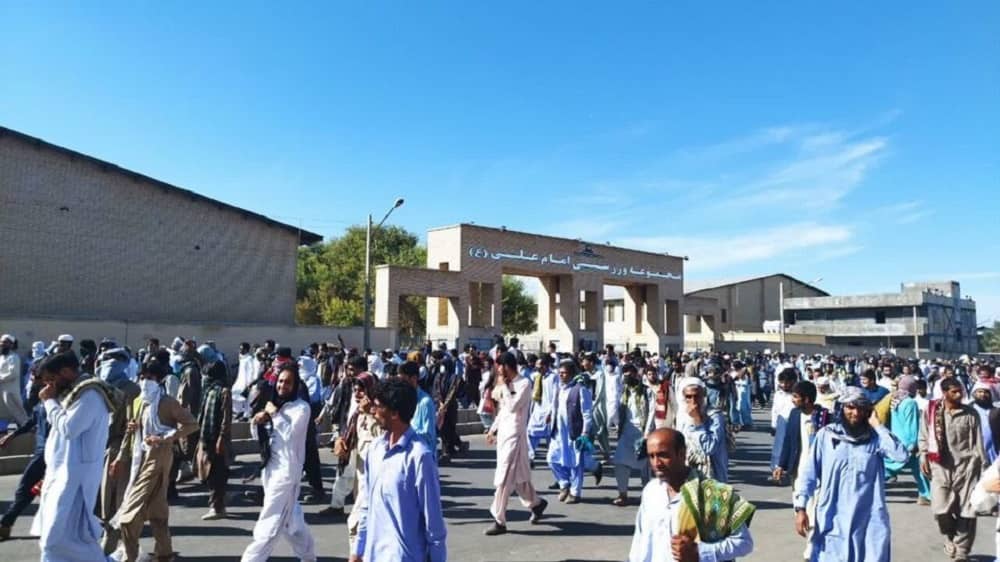
As a new wave of war and turmoil grips the Middle East, reports reveal that Iran’s ruling clerical regime is taking advantage of the international community’s shifted focus and Iran’s society’s shock to implement harsh measures that it previously hesitated to enforce.
According to the Iran Human Rights Society, the regime’s Judiciary carried out a series of executions during October. On October 9, three prisoners were executed in the Central Kerman Prison, followed by one execution on October 10 in the Central Prison of Karaj. On October 11, three prisoners were executed in various prisons in Bam, Isfahan, and Torbat Heydariyeh. Nine prisoners met the same fate on October 12 in Karaj and Urmia prisons, with two more executions on October 13 in Karaj and Hamedan. On October 15, two prisoners were executed in the Central Prisons of Zanjan and Tabriz, and on October 16, another inmate was executed in the Central Prison of Ardabil.
The string of executions continued with three prisoners executed on October 17 in Khorramabad and Gorgan. On October 18, a Baluch citizen was executed in an Isfahan prison. A mass execution involving ten simultaneous hangings took place in Ghezelhesar Prison in Karaj on October 19, and five other prisoners were executed in other cities.
On October 21, a Baluch citizen in Isfahan Prison met the same grim fate. Two prisoners were executed on October 22 in Zahedan, and two more in Lakan Prison in Rasht and Karaj Central Prison. On October 22, three male inmates at Adelabad Prison in Shiraz and one female inmate at Dastgerd Prison in Isfahan were executed. Four prisoners faced execution on October 24 in Karaj and Khoy, with another Baluch citizen executed in Zahedan on October 25. Finally, four prisoners in Rasht, Qazvin, Karaj, and five inmates in Birjand were executed on October 26.
As Baluch worshippers gathered to attend the Friday prayer sermon in Zahedan on October 20, they met with an unprecedented dispatch of anti-riot police and hordes of security forces ready to crackdown on those who were moving toward the city’s Maki Mosque.
October 20—Zahedan, southeast #Iran
More footage regime security forces deployed to crack down on locals trying to attend Friday prayers at the Makki mosque.#IranProtests pic.twitter.com/BYwZlVX7D9— People’s Mojahedin Organization of Iran (PMOI/MEK) (@Mojahedineng) October 20, 2023
Since the beginning of the 2022 uprising in Iran, the Maki Mosque has become a central gathering place for protesters and dissidents, offering one of the few opportunities to voice their calls for regime change and shout out slogans for regime change. Throughout the year, the clerical dictatorship used various tactics, including intimidation and inducements, to encourage tribal leaders to compromise or resort to silence.
However, on October 20, amid a substantial increase in security measures, the regime adopted systematic approaches to prevent the gathering and to mark, identify, and arrest those in attendance. In the days following the Friday prayer sermon in Zahedan, there were reports of a significant number of arrests.
October 20—Zahedan, southeast #Iran
Regime security forces attack Friday prayer attendees, injuring several people and arresting others.#IranProtestspic.twitter.com/EXKjTzMfuF— People’s Mojahedin Organization of Iran (PMOI/MEK) (@Mojahedineng) October 20, 2023
The Iranian authorities’ relentless onslaught against weekly peaceful protests by thousands of protesters and worshippers from Iran’s oppressed Baluchi minority in Zahedan, Sistan, and Baluchistan province, escalated on Friday 20 October, as security forces resorted to severe beatings, unlawful use of tear gas and water cannons, and carried out mass arbitrary arrests, enforced disappearances, torture, and other ill-treatment, said Amnesty International on October 26.
On October 25, Iran Human Rights Society warned about the dire conditions of over 500 detainees from the protests on October 19, 2023, in Zahedan. According to the source, security forces have subjected the detainees to torture and violence, with many of them being children under the age of 18.
The brutal murder of a prominent film director in Tehran on October 14, with a method reminiscent of the chain murders of the 1990s, sent shockwaves throughout the nation. Some political analysts believe that this act was a deadly warning from the regime to numerous celebrities who had expressed sympathy for recent protesters.
Furthermore, while obtaining information from sources within Iran is challenging, Persian-language media and human rights organizations continue to report an increased risk faced by dissidents on a daily basis.
Regardless of the Middle East crisis’s outcome and its implications for the Iranian regime, Iran’s society has long endured brutal oppression. Decades of tyranny have failed to break the will of Iranians, and these desperate acts have no outcome but the accumulation of rage.
This post was originally published on this site be sure to check out more of their content.






